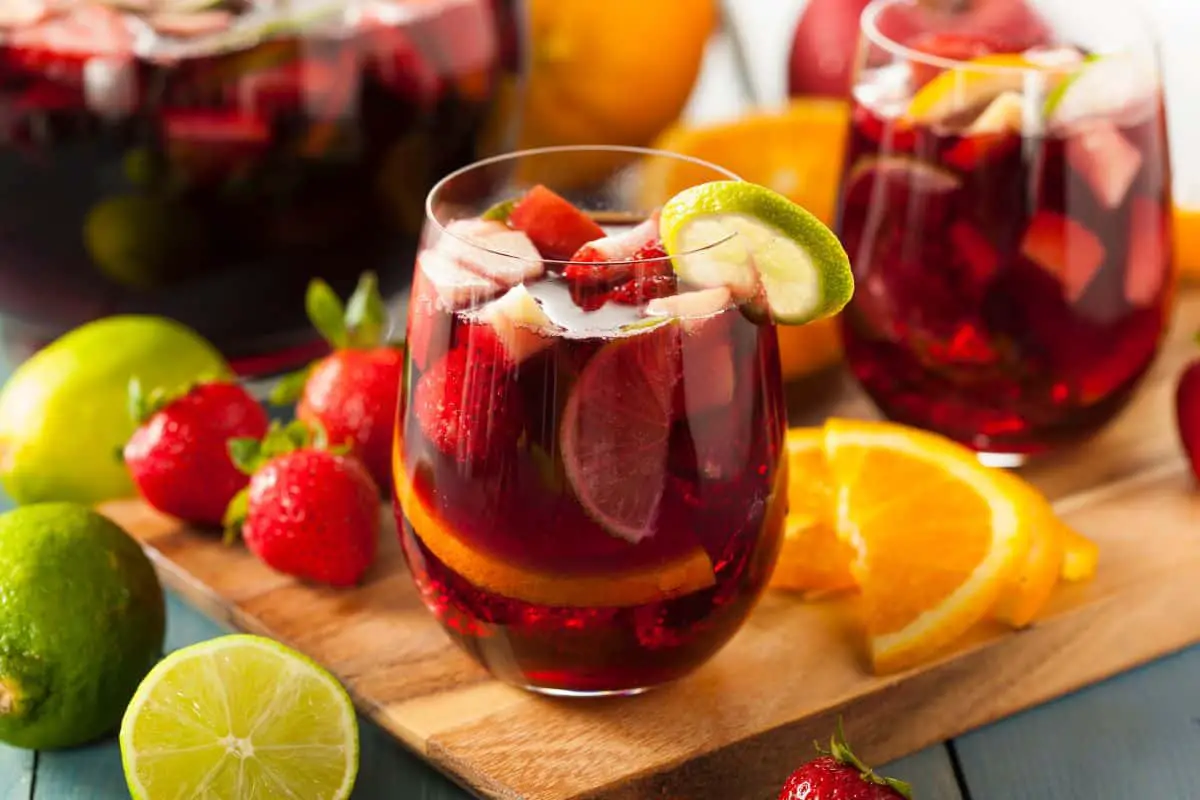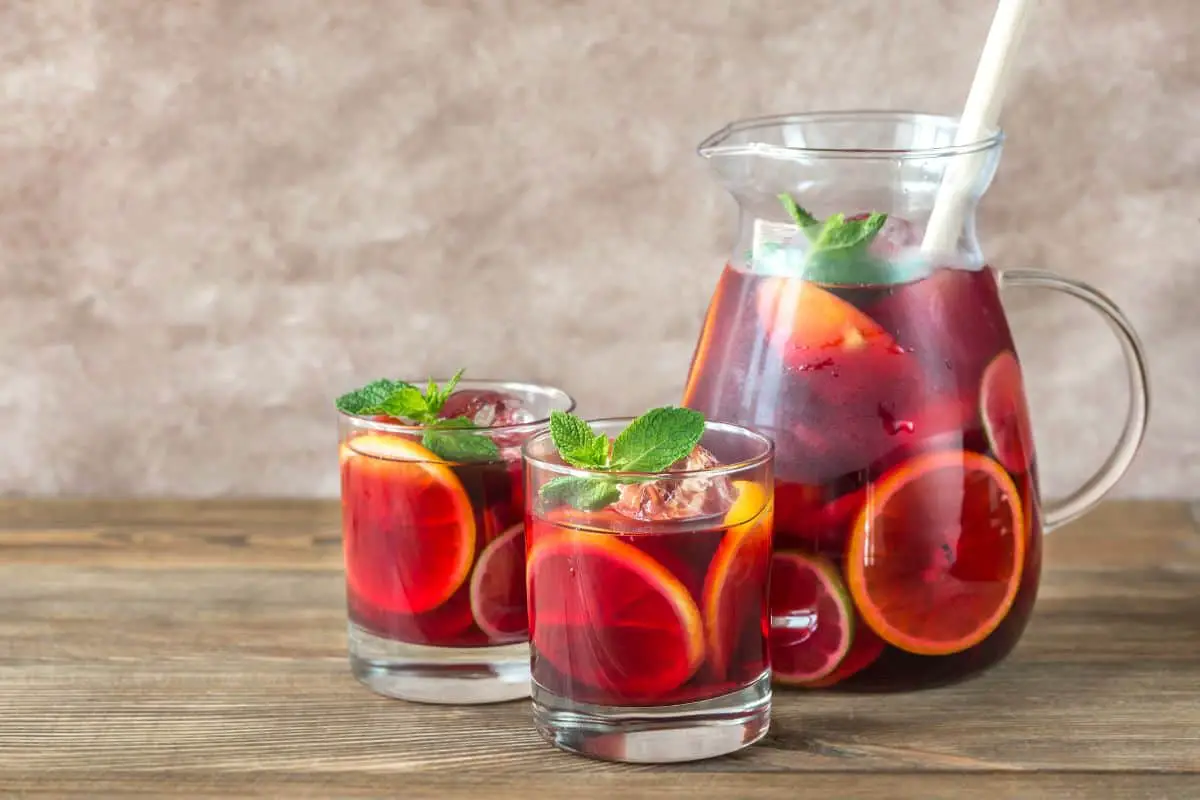Sangria is that go-to vacation drink while you are kicking back and relaxing in Spain – but there are actually a few different variants of sangria which means that it can vary in taste.
This has led to some people believing that sangria is sweet or not sweet at all – so which is it?

Is sangria sweet, or does it offer different flavors to suit different tastes?
Here we are going to be taking a closer look at sangria including what it is so we can understand how sweet this beverage is. So, if you want to learn more about sangria, this is the place for you!
Check out the information below to find out if sangria is sweet or not!
What Is Sangria?
Contrary to popular belief, sangria isn’t actually its own individual wine. In fact, it is an alcoholic beverage that is closer to being a punch than a wine (although it is made up of wine).
It originates in the Iberian peninsula, is drunk in both Spain and Portugal, and best served cold.
It’s a super popular beverage although it is mostly drunk by tourists rather than locals, but this means that sangria can be found on the menu in bars and restaurants throughout the peninsula.
Sangria is made of two main ingredients: red wine, and chopped fruit. Some other additional ingredients may be added including fruit juice or spirits to make a stronger drink, but the red wine and fruit remain two constants in sangria.
There are variants of sangria such as sangria blanca which uses white wine instead of red, and a non-alcoholic version known as ponche de sangria which uses a soft drink instead of wine.
A range of different fruits are used in sangria. Some may use local fruits such as berries, apples, pears, peaches, or nectarines. Others use international fruits found elsewhere in the world such as limes or pineapple.
Ultimately, you can use whatever fruits you like in sangria but most people stick with sweet fruits and citrus fruits to make a refreshing punch.
As for the red wine, the traditional wine used in sangria is a red wine from the Rioja region of Spain, where a range of red and white grapes are grown to make thousands of wines. Wines that originate from this wine region include tempranillo and garnacha.
Overall, these ingredients all combine together to make sangria – a fruity alcoholic beverage that is closer to a punch than a fine wine in its own right.
Is Sangria Sweet?
Sangria is traditionally made to be a sweet drink but how sweet it is all depends on how you make it. It is a type of punch, after all, which means that you can adjust the ingredients and recipe as you see fit.
This means that you can sweeten your sangria further or reduce its sweetness depending on your tastes.
So, what makes sangria sweet?
First it’s the wine. The red wines used to make sangria are traditionally rich and fruity in flavor. Although which red wine you choose to use can vary, most Spanish red wines are juicy with notes of cherries, plums, strawberries and raspberries.
These fruity notes all transition into the sangria and give it plenty of sweetness.
Then, most sangria recipes add additional ingredients such as orange juice and sugar. This further sweetens the beverage, helping water down the wine while keeping those fruity notes strong and present.
Finally, you add your chopped fruit – peaches, pears, berries, nectarines, pineapple, the list goes on!
You can completely tailor the chopped fruit to your preferences but no matter what you add, the fruit is sure to help sweeten the sangria further.
Overall, this means that sangria is definitely considered a sweet beverage.
However, you have the power to make it even sweeter by opting for a sweet red Spanish wine, adding extra sugar and juice, and opting for super sweet chopped fruits.
Why Is Sangria So Sweet?

Sangria is traditionally drunk as a summer beverage at gatherings like parties and picnics, and it’s important to drink light and refreshing beverages in Spain due to the high temperatures and heat.
This is why sangria is also super popular with tourists – it’s seen as a bright, refreshing alcoholic beverage that can help keep tourists cool while enjoying a delicious drink.
The sweetness is also pretty indulgent, making it a popular drink to enjoy while on vacation and this is another reason why sangria is so popular with tourists.
While the locals only enjoy sangria at big events, tourists on vacation see it as their go-to vacation drink to enjoy for their stay in Spain or Portugal.
So, sangria is just a super sweet punch enjoyed at special occasions but tourists enjoy it during their vacations frequently.
This is understandably why sangria is made to be so sweet – it is meant to be enjoyed as a rare treat, not as a daily beverage to enjoy with your evening meal.
What Foods Go Well With Sangria?
Sangria is not meant to be enjoyed alongside an evening meal, and instead is seen as a dessert in its own right (as a kind of sweet drink enjoyed alternatively to a dessert).
However, sangria still has a lot of flavor which makes it a delicious drink to enjoy alongside some foods.
Its bright zestiness makes it a great drink to pair with seafood, especially if you add citrus ingredients like lemon and lime. This means you can enjoy sangria with some calamari, shrimp, shellfish and more.
It’s coolness and sweet flavor also makes it the perfect beverage for spicy dishes. It combats the spice of ingredients such as salsa, jalapenos, chilis and more – so you can wash down your spicy meal with a glass of sangria.
This makes sangria the perfect beverage to pair with Mexican and Spanish cuisine.
Ultimately, sangria is best enjoyed as a late evening alcoholic beverage, drunk solo perhaps with a few spicy jalapeno poppers or calamari pieces as a snack.
Final Thoughts
So, that’s everything you need to know about sangria. It’s a super sweet drink but you can adjust the sweetness by playing with the recipe – so why not try giving it a go yourself?
- How to Learn Wine Tasting: Essentials for Beginners - March 10, 2024
- How to Learn to Like Wine: Cultivating an Appreciation for the Vintner’s Art - March 10, 2024
- Thanksgiving Sangria: A Flavorful Twist to Your Holiday Table - August 27, 2023




![What Does Sangria Taste Like? [A Guide] What Does Sangria Taste Like [A Guide]](https://tastyvino.com/wp-content/uploads/2022/12/What-Does-Sangria-Taste-Like-A-Guide-150x150.jpg)
![How To Make Sangria [The Ultimate Guide] How To Make Sangria [The Ultimate Guide]](https://tastyvino.com/wp-content/uploads/2022/12/How-To-Make-Sangria-The-Ultimate-Guide-150x150.jpg)
![Is Sangria Good For Weight Loss? [A Guide] Is Sangria Good For Weight Loss? [A Guide]](https://tastyvino.com/wp-content/uploads/2022/12/Is-Sangria-Good-For-Weight-Loss-A-Guide-150x150.jpg)

